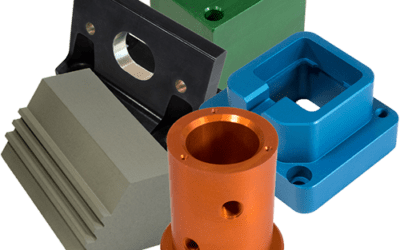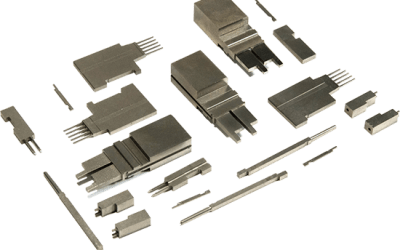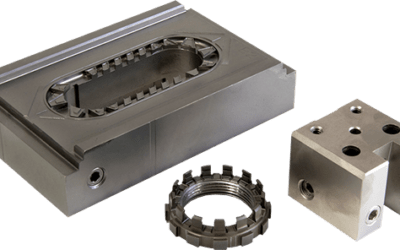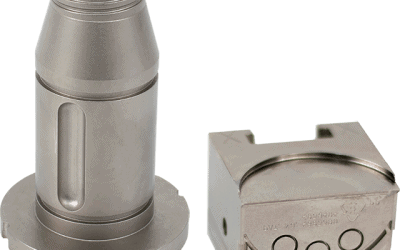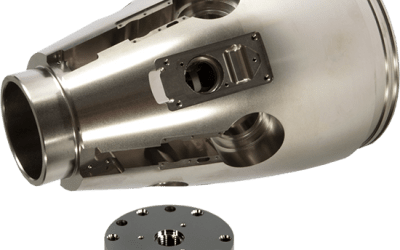MIL-PRF-8625 Plating & Anodizing Specifications

The MIL-PRF-8625 plating and anodizing specifications cover the standards for anodic coatings on aluminum and aluminum alloys and is a critical standard for applications in the aerospace, military, and high-performance manufacturing industries. A recent revision to this specification, changing it to a “performance” or PRF standard, includes important updates that impact how anodic coatings are applied, tested, and qualified. The experts at PFI, with several decades of combined industry experience and knowledge of other critical standards, are well versed in the revised MIL-PRF-8625 plating specifications and are capable of applying them towards military, defense, and aerospace projects.
What is MIL-PRF-8625?
MIL-PRF-8625 defines the requirements for three main types of anodic coatings used to enhance the durability, corrosion resistance, and surface hardness of aluminum components in military, aerospace, and defense projects. While the three types of anodic coatings are detailed below, PFI currently only covers Type II, Type IIB, and Type III aluminum anodizing.
- Type I – Chromic Acid Anodizing: Used to create a thin but corrosion-resistant layer of protective aluminum oxide on aluminum parts or components. Can also improve adhesion of post-painting paint applications, insulate against electrical currents, and welding or riveting. (Not currently available at PFI.)
- Type II – Sulfuric Acid Anodizing: Thicker than Type I, sulfuric acid anodizing s commonly used for more decorative finishes or as a base for dyes and paints. Type IIB uses a thinner sulfuric acid coating and serves as a non-chromate replacement for Type I coatings.
- Type III – Hard Coat Anodizing: The most advanced anodizing available at PFI develops a thick, hard, and abrasion-resistant layer of protection on aluminum parts that are destined for the most challenging environments or applications.
Each specific anodizing type is designed to meet the performance or aesthetic demands of certain military applications, with controlled thickness, coverage, and extensive post-plating testing.
Why Was the Specification Revised?
The specific standards for military or aerospace applications are routinely updated or revised to reflect new readily available technologies, environmental or sustainability concerns, and after receiving feedback from those using the equipment in the field. The revised MIL-PRF-8625 specification was issued to provide clarification on certain process control parameters while also improving consistency in coating quality and aligning the standard with newer environmental and safety regulations. These, and potential future updates, will help ensure that anodized components meet demanding performance and reliability expectations in critical environments.
Notable Changes to MIL-PRF-8625
While the core structure and guidelines of MIL-PRF-8625 remain the same as the previous iteration, there are several notable updates that may impact PFI plating services for military and aerospace applications
- Film Thickness Clarity: The revised spec provides more precise guidance on the acceptable ranges for film thickness on Type II and Type III coatings to ensure performance consistency and uniform coverage.
- Corrosion/Salt Spray Testing: Salt spray is among the most corrosive forces in nature and revised salt spray test protocols better reflect durability requirements in real-world military and aerospace applications.
- Color & Dye: There are now stricter metrics controlling the supplemental anodic coating dyes, including adjustments to color retention.
- Sealing: There are now expanded details on the acceptable sealing methods, including nickel acetate and hot water, placing a greater focus on the quality of the seal and ensuring no unwanted penetration to the alumiunum or alloy base material.
- Traceable Documentation: Revised MIL-PRF-8625 plating specifications expanded the requirements for record keeping to further support quality audits and provide clear traceability for defense and aerospace contracts.
- Environmental Compliant: The recent integration of the environmental compliance standards, RoHS- and REACH, provide alternatives to chromium-based solutions where applicable.
Staying Compliant – What to Do Next
To ensure compliance with the revised MIL-PRF-8625, it is important to work with a plating provider you can trust. PFI not only understands the revised MIL-PRF-8625 standards, but also works within countless other heavily regulated industries that require high-performance and durable plating specifications. If you are interested in learning more, reach out to the team at PFI and ask about how these changes have been implemented and request a free quote.
Get A Quote for MIL-PRF-8625 Plating
If you’re unsure how the revised specifcations impact your plating needs, consider working with a plating provider experienced in defense and aerospace compliance. A qualified partner like PFI Inc., can help interpret the revision, validate your processes, and keep your parts fully compliant with the latest standards. Send us a message today for a quote on Type II, Type IIB, and Type III anodizing that adheres to MIL-PRF-8625 specifications.

